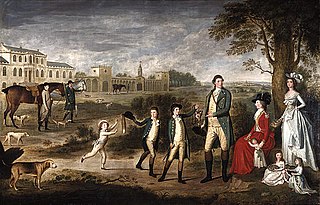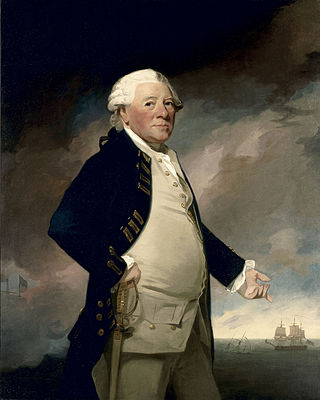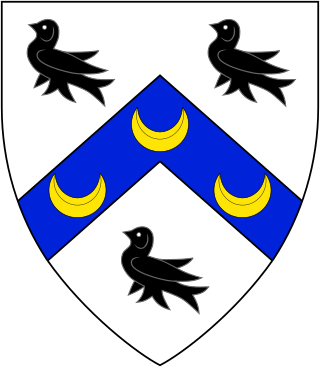The Lawes Baronetcy, of Rothamsted in the County of Hertford, is a title in the Baronetage of the United Kingdom. It was created on 19 May 1882 for the entrepreneur and agricultural scientist John Bennet Lawes.
On the death of the 5th baronet, the baronetcy became extinct.
There have been two baronetcies created for persons with the surname Colquhoun ("Cohoon"), one in the Baronetage of Nova Scotia (1625) and one in the Baronetage of Great Britain (1786).

There have been five baronetcies of the United Kingdom created for a person with the surname Erskine, two in the Baronetage of Nova Scotia, one in the Baronetage of Great Britain and two in the Baronetage of the United Kingdom. Two of the creations are extant as of 2010.
There have been five baronetcies created for people with the surname Napier, three in the Baronetage of England, one in the Baronetage of Nova Scotia and one in the Baronetage of the United Kingdom. As of 2014 two of the creations are extant.
There have been five Baronetcies created for people with the surname Forbes, four in the Baronetage of Nova Scotia and one in the Baronetage of the United Kingdom. The first holder of the Burn Baronetcy of Jessfield, created in the Baronetage of the United Kingdom in 1923, assumed the surname of Forbes-Leith of Fyvie in 1925.

There have been seven baronetcies created for persons with the surname Parker, three in the Baronetage of England, two in the Baronetage of Great Britain and two in the Baronetage of the United Kingdom. Two of the creations are extant as of 2008. Though none of the different families of baronets were related, several supplied a number of flag officers to the Royal Navy.

There have been four baronetcies created for persons with the surname Sykes, two in the Baronetage of Great Britain and two in the Baronetage of the United Kingdom. Three of the creations are extant as of 2008.

There have been twenty one baronetcies created for persons with the surname Williams, eight in the Baronetage of England, three in the Baronetage of Great Britain and ten in the Baronetage of the United Kingdom. Only six of the creations are extant as of 2017.
There have been nine baronetcies created for persons with the surname Moore, two in the Baronetage of England, one in the Baronetage of Ireland, two in the Baronetage of Great Britain and four in the Baronetage of the United Kingdom. As of 2014 two creations are extant and one is considered dormant.

There have been nine baronetcies created for persons with the surname Cooper, one in the Baronetage of England, one in the Baronetage of Ireland and seven in the Baronetage of the United Kingdom.

The Worsley family is an English family that is derived from Sir Elias de Workesley, a Norman knight who was a youth at the time of the Norman conquest. He later accompanied Duke Robert II of Normandy on the First Crusade and was buried at Rhodes.
There have been four baronetcies created for persons with the surname O'Brien, one in the Baronetage of Ireland and three in the Baronetage of the United Kingdom.

There have been seven baronetcies created for persons with the surname Watson, one in the Baronetage of England, one in the Baronetage of Great Britain and five in the Baronetage of the United Kingdom. One creation is extant as of 2016.
There have been two baronetcies created for persons with the surname Simeon, one in the Baronetage of England and one in the Baronetage of the United Kingdom. As of 2014 one creation is extant.
There have been four baronetcies created for persons with the surname Rich, two in the Baronetage of England, one in the Baronetage of Great Britain and one in the Baronetage of the United Kingdom. As of 2008 three of the creations are extinct while one is dormant.
There have been two baronetcies created for persons with the surname Dyer, both in the Baronetage of England. One creation is extant as of 2015.
The Hoskyns Baronetcy, of Harewood in the County of Hereford, is a title in the Baronetage of England. It was created on 18 December 1676 for Bennet Hoskyns, Member of Parliament for Wendover, Hereford and Herefordshire. He was the son of the poet, lawyer and politician John Hoskins. The second Baronet was one of the founders of the Royal Society and served as its president from 1682 to 1683. The fourth Baronet fought under the Duke of Marlborough in the War of the Spanish Succession and also represented Herefordshire in the House of Commons. The twelfth Baronet was Lord Bishop of Southwell from 1904 to 1925.
There have been four baronetcies created for people with the surname Innes, three in the Baronetage of Nova Scotia and one in the Baronetage of the United Kingdom. Three of the creations are extant as of 2010.

Sir Charles Bennet Lawes-Wittewronge, 2nd Baronet was an English rower, athlete and sculptor. He exhibited twelve works at the Royal Academy.
The Wittewrong Baronetcy, of Stantonbury in the County of Buckingham, was a title in the Baronetage of England. It was created on 2 May 1662 for Sir John Wittewrong, a former parliamentarian colonel and Member of Parliament for Hertfordshire. The name was spelt in different ways, including Wittewronge and Wittwronge. The third Baronet sat as Member of Parliament for Aylesbury and Wycombe. The title became extinct on the death of the sixth Baronet in 1771.
There have been four baronetcies created for persons with the surname Bennet, two in the Baronetage of England and two in the Baronetage of Nova Scotia. All four creations are extinct.